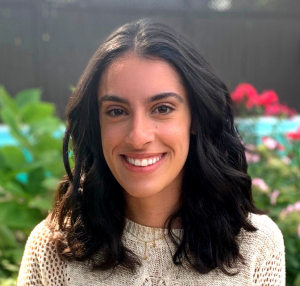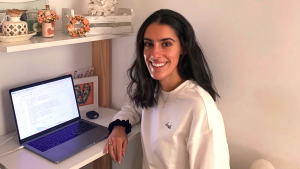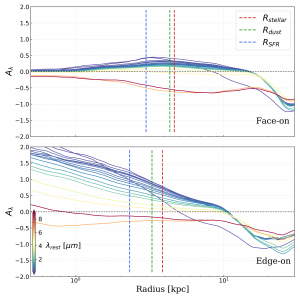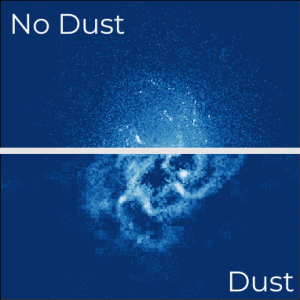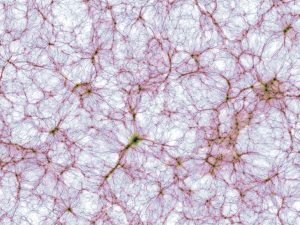Rebecca is going into her final year as an undergraduate student at the University of Toronto. She specializes in Physics and Astronomy, with a minor in Mathematics. Rebecca is originally from São Paulo, Brazil, but spent most of her childhood in Peru, and moved to Toronto in 2018. She is thrilled to be working with Dr. Lamiya Mowla, studying the evolution of galaxies in the SIMBA simulation.
What made you decide to participate in SURP?
When I found out about SURP, I was the most excited to participate, as I had loved all my astronomy classes and wanted to go deeper into the field. SURP stood out as a great opportunity where I could learn more cool astronomy and also get to connect with active astronomers working on various fields and projects. I was also starting to think about grad school, and I wanted to participate in SURP so I could experience what research in astronomy looks like.
What is your favourite thing about SURP?
The best thing about SURP for me has been the mentorship. I really love the weekly meetings we have with all of the SURP students and supervisors working with galaxies. It is a space that makes me excited to see what others are doing, while also allowing me to share my progress in a low stress environment, and receive valuable advice. I have had nothing but amazing interactions will all of the supervisors and always feel supported by the other students, as well.
Can you tell us about your research project?
My research project, under the supervision of Dr. Lamiya Mowla, focuses on understanding the effects of dust on the size evolution of galaxies. We are using images from the SIMBA simulation that have been post-processed with the Powderday Radiative Transfer Package to create a realistic light distribution, comparable to what we would observe. By measuring the attenuation caused by the dust for galaxies at different redshifts, we are able to more clearly see the effects of dust and its evolution alongside the galaxies. Then we can compare the mass- and light-weighted sizes of these galaxies at different redshifts to try to find how the evolution in attenuation can account for the evolution in measured sizes.
Can you explain how SURP has perhaps been different from your undergrad work?
For me, SURP has been an improved version of my undergrad work: it has had none of the negatives and all of the positives plus a bit more. While undergrad work ends up being focused on grades and deadlines, the freedom I’ve had throughout the summer has been super motivating and engaging. Being able to set my own goals, and be flexible with those as I inevitably hit dead ends, has been a great learning experience that I will take with me for the future.
What are your plans for the future?
After I complete my undergraduate degree, I plan to continue my studies in Astrophysics and hopefully earn a PhD. As well as researching, I would love to be an active member in a STEM outreach community and help develop institutions to make education more accessible to all.
For more 2021 SURP Student Spotlights, visit dunlap.utoronto.ca/training/surp/studentspotlight2021.

